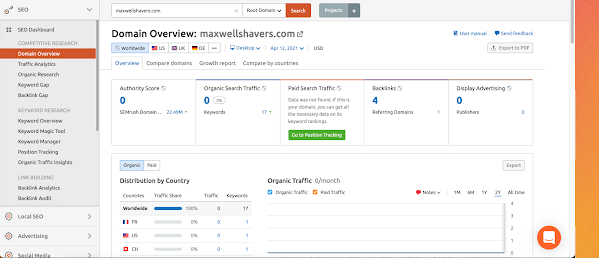Bounce Rate Metric
The bounce rate is an engagement metric that measures single page visits divided by entry pages. (Reed College of Media, 2021) Google Analytics defines the bounce rate as, " single-page sessions divided by all sessions, or the percentage of all sessions on your site in which users viewed only a single page and triggered only a single request to the Analytics server." (Google, 2021)
Generally, a high bounce rate is frowned upon especially if the success of your site depends on viewers moving past a single page such as a product page or a news website. The exclusions are single-page sites where single page sessions are expected. (Google, 2021)
As a rule of thumb, it is good to have a bounce rate between 20-40%. Forty to fifty-five percent is tolerable and 55-90% shows a marketer that there is significant room for improvement on their site. If the bounce rate is below 20% or above 90% then that usually means that there is a tracking or code instillation error. (Cameron-Kitchen, 2016)
If your desire is to lower your bounce rate, then there are a few things that you could pay attention to within Google Analytics. Bounce rate can be looked at from different perspectives within the Audience Overview, Channels report, All Traffic report and All Pages report. (Google, 2021)
According to Google, if the overall bounce rate is high, then you as a marketer need to see if it's high across all pages or if there are one or two specific pages driving the rate up. (Google, 2021) If a few pages end up being the problem, then see if the content correlates well with the marketing used to bring users to those pages. (Google, 2021) If you are experiencing a high bounce rate within a particular channel, then take a look at your marketing efforts for that specific channel. For example, if the users are being referred via display and they're bouncing, make sure that the display ads are relevant to the actual content of the site. Lastly, if the bounce rate problem is universal across your site, look at the tracking-code to make sure all the required pages are tagged and that they're tagged correctly. In addition, it might be necessary to step back and look at the overall design of your site. (Google, 2021)
Bounce rate is helpful in diagnosing certain problems within a website or reaffirming that the website is working over time, but bounce rate alone won't help marketers understand their websites performance. I think that in addition to bounce rate, session duration would be a good metric to use. A marketer could look at bounce rate and session duration and could get a clearer understanding if the landing page content is irrelevant to the display ad, or if users genuinely get confused and spend a long time trying to figure out a specific page that they're one.
Those are just a couple examples of how bounce rate in conjunction with other metrics potentially could be useful in measuring a marketer's website performance.
References
Cameron-Kitehcn, T. (2016, October 22). What Is A Good Bounce Rate? from https://exposureninja.com/blog/bounce-rate/#should
Google. (2021) Bounce Rate. from https://support.google.com/analytics/answer/1009409?hl=en
Reed College of Media. (2021). Week 1 Lesson: Introduction to Web Analytics, Basics of Web Analytics and Tool Introduction and Selection. from https://ecampus.wvu.edu/webapps/blackboard/execute/displayLearningUnit?course_id=_159257_1&content_id=_8041502_1&framesetWrapped=true




You referenced channels and these are important, I tend to agree with this thinking, as well as referral sources. Both of these are things that I look at and if I am getting significant bounce from a referrer or a channel, it probably true that I need to reconsider the channel or revise my copy.
ReplyDelete